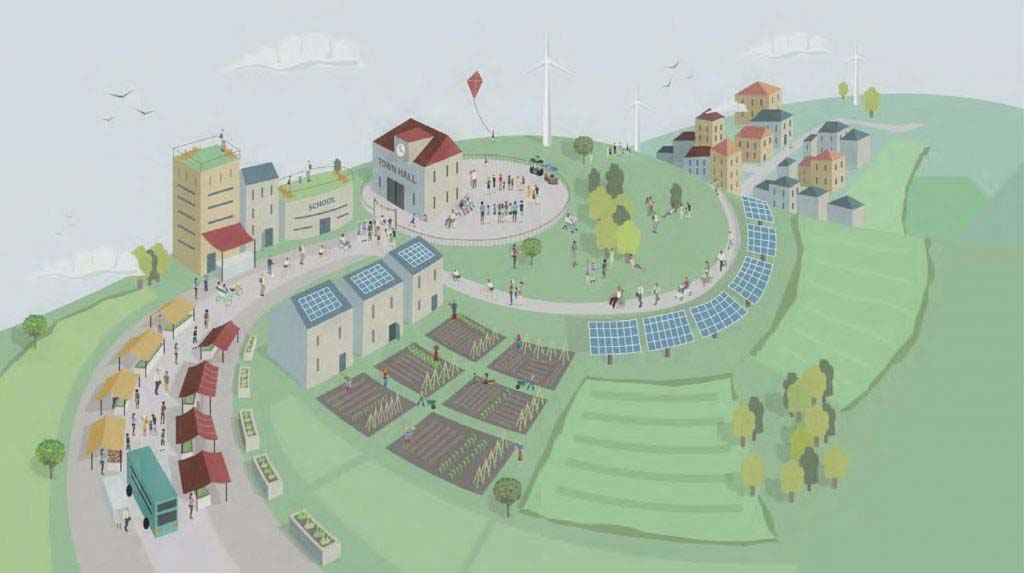
Transition is a movement of communities coming together to reimagine and rebuild our world. Here we explain what it is, why people do it, how the movement started and give you a sense of our underpinning principles and approach.
Tran • si • tion [tran – zish – uhn]
n. 1. passage from one form, state, style or place to another
2. a period of transformation.
Transition is a movement that has been growing since 2005. Community-led Transition groups are working for a low-carbon, socially just future with resilient communities, more active participation in society, and caring culture focused on supporting each other. Their approach is based in the Transition Principles.
In practice, they are using participatory methods to imagine the changes we need, setting up renewable energy projects, re-localising food systems, and creating community and green spaces. They are nurturing the Inner Transition of the cultural and mindset changes that support social and environmental change. They are sparking entrepreneurship, working with municipalities, building community connection and care, repairing and re-skilling. Find out more about the characteristics of Transition.
The community level of scale has huge potential to influence change and is a crucial part of developing and guiding social and economic systems toward sustainability, social justice and equity. There is an increasing recognition that top-down approaches are not sufficient alone to affect change and need to be combined with community-level responses.
It’s an approach that has spread now to over 48 countries, in thousands of groups: in towns, villages, cities, Universities, schools. Around the world, there are 23 Transition Hubs that support and connect Transition groups in their country/region and connect internationally. One of the key ways Transition spreads is through telling inspiring stories, and that’s what we aim to do on this website. We really hope you feel inspired to take part, we’d be honoured if you did.
Last updated: November 2021
“I see [Transition] as a wonderful combination of civic local engagement and a worldwide network. In many towns throughout the world people get together, finding community, enthusiastic about the idea of together envisioning a future model for their town that will make it worth living in. There is something out there ladies and gentlemen, I’m deeply convinced, that was set in motion already quite some time ago…”
Horst Köhler, former German president and former president of the IMF




